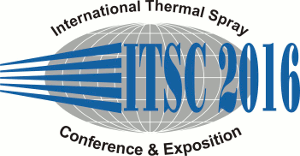
|
4729 |
|
Thursday, May 12, 2016, Room 3C + 3D 9:20 AM New Processes II |
|
High-velocity spray deposition of WC cermets by an air-oxygen controlled combustion process |
|
Maria Parco* / TECNALIA, Spain Iñaki Fagoaga/ TECNALIA, Spain Georgiy Barykin/ TECNALIA, Spain Carlos Vaquero Gonzalez/ TECNALIA, Spain |
|
HVOF processes represent the state of art for the spray deposition of wear and/or corrosion resistant coatings since their supersonic gas velocities in combination with moderate flame temperatures allow the deposition of optimal coatings with very high bond strengths, fine as-sprayed surface finishes and relatively low oxide levels. However, the new generation of coating materials (fine powders, submicron carbides), stringent quality requirements for metallic alloys and the high productivity demanded by the industry, push the HVOF technologies to their limits. Recently a novel thermal spray process, the Air-Oxygen Controlled Combustion Spray process (CCS), has been development by Tecnalia. The CCS system is basically a high velocity combustion process able to operate within the supersonic regime using a broad range of fuel/oxidant ratios basically thanks to the use of air-oxygen mixtures and a carefully designed gun. This fact allows the operation of the system with extremely low flame temperatures while keeping a supersonic flow of combustion products, thus allowing the solid state deposition of almost all industrially relevant metal base and cermet materials with superior deposit qualities. Specifically, this work deals with the development of superhard cermet coatings, based on different types of standard, fine sized and nanostructured WC-Co(Cr) powders. The process parameters as well as the system configuration have been optimised for each powder material, looking for the best properties and microstructure. The results are compared in terms of the technical characteristics of the coatings (microstructure, XRD analysis, micro and macro hardness, surface roughness&), their functional performances (tribological behaviour, corrosion resistance, toughness&) and the industrial productivity of the system. |